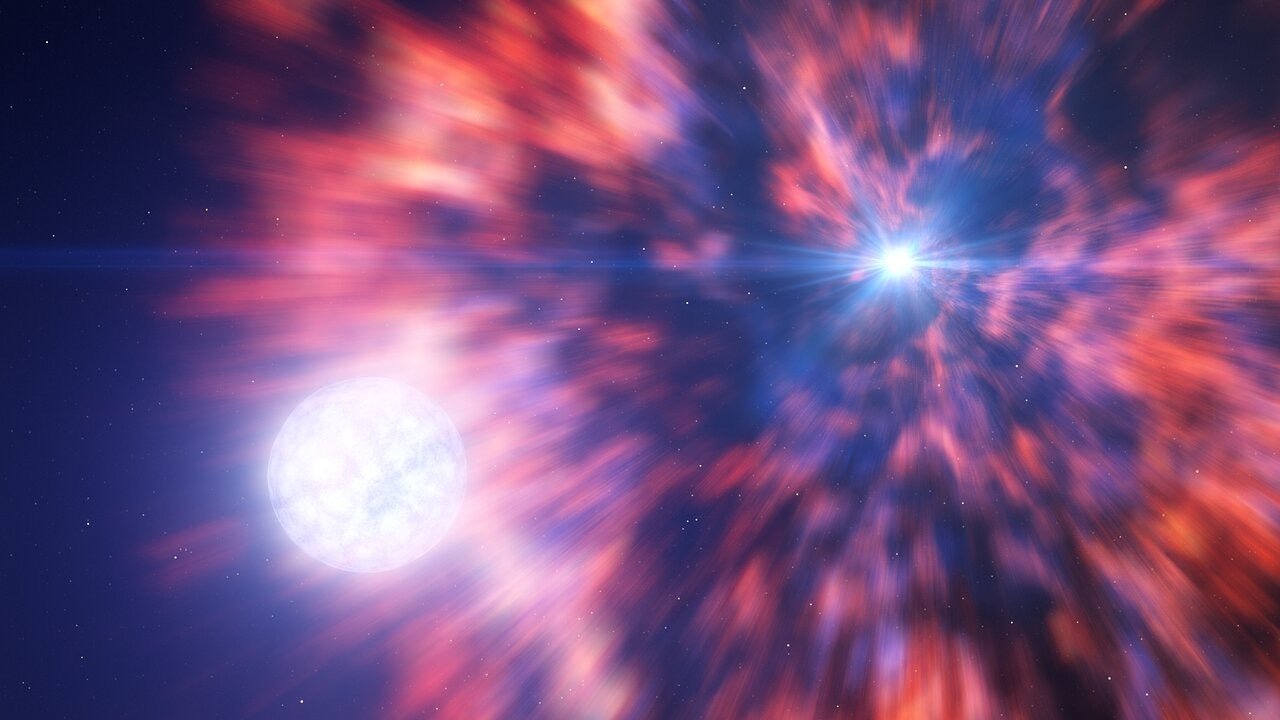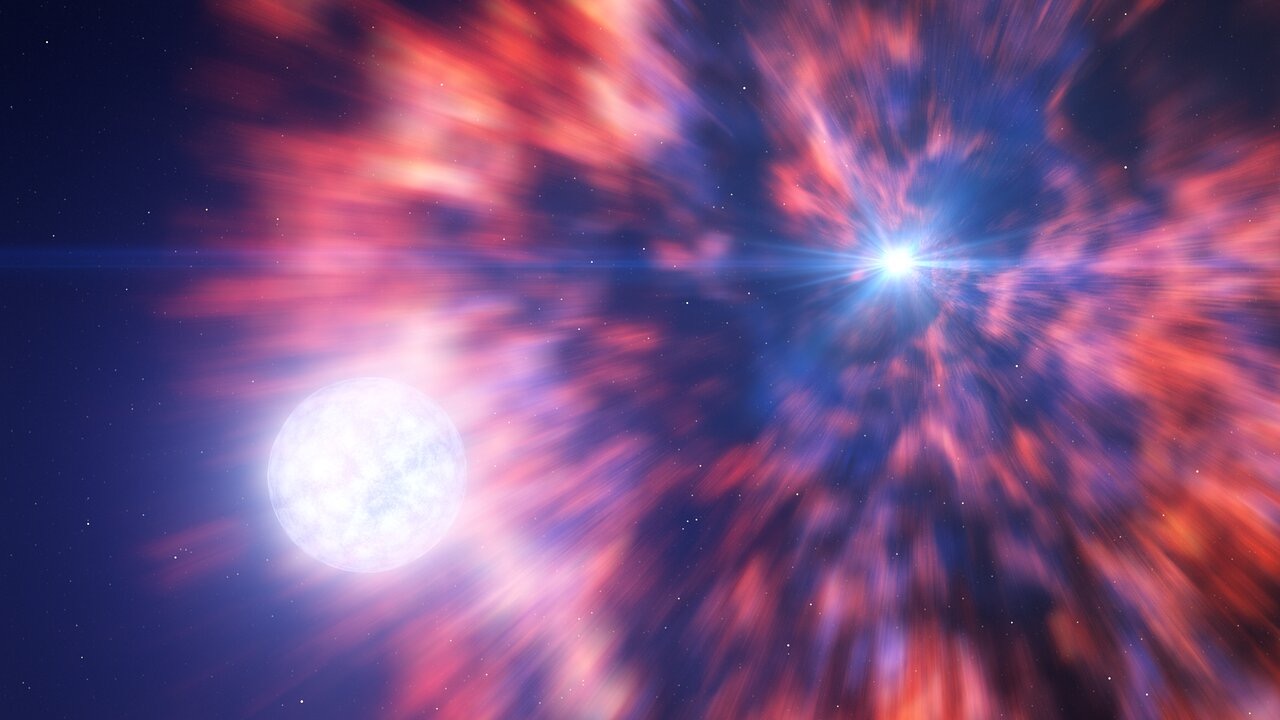A direct link between the deaths of massive stars and black holes and neutron stars has astronomers jazzed.

This artist’s impression is based on the aftermath of a supernova explosion, which resulted in a compact object.
Credit:
ESO/L. Calçada
In 2022, the light of a supernova 75 million light-years away reached Earth. And as astronomers piece more and more together about the event, they’re running into a few things that make it more than meets the eye.
To Ping Chen, an astrophysicist at the Weizmann Institute of Science, and his colleagues, at first the exploding star appeared to be a Type Ic supernova — defined as one where there’s no detectable hydrogen in the spectrum. This is usually because the outer layers of hydrogen and helium around the massive star have been shed before the explosion.
But eventually, hydrogen was discovered in the system, and it came from an unseen source.
Supernova SN 2022jli, it seemed, had a companion, another star spared from the violent force of the supernova that could have spelled its doom. But now, it provides a brilliant laboratory for astrophysicists to learn about what happens once a star goes supernova.
Chen and colleagues presented their findings at the 243d American Astronomical Society meeting in New Orleans, coinciding with their paper published in Nature.
When a supernova occurs, the dense core of the progenitor star either becomes a neutron star or a black hole. That much is known. But astronomers know less about the exact mechanisms, and why some cores are dense enough to fall in on themselves into a supernova while others become a huge, angry mass of neutrons.
And Chen and his colleagues aren’t sure which SN 2022jli became, at least yet. Neither the supernova remnant nor the companion star are visible right now, as they are obscured by hot gas ejected by the progenitor star. But astronomers can detect their presence in other ways.
First, they found the hydrogen in spectra of the region, but not in the outer shell. This is one clue that something is supplying the hydrogen. But then the hydrogen line is also oscillating in a regular period.
“The wavelengths of this line are shifting. So, it goes blue to red and blue to red,” Chen says. The Doppler Effect tells us that red indicates the light is moving away from the observer, while blue means it’s moving toward the observer. In this case, the shift occurs across a roughly 12-1/2-day period.
Related: The different types of supernovae
Chen says the companion star is in an elliptical orbit. As it gets closer to the remnant, a little hydrogen is siphoned off the outer layers. This leads to the observed wavelengths. In other words, it’s borrowed hydrogen. This also causes the supernova’s region to brighten slightly rather than uniformly dim as this matter falls toward the remnant’s surface.
‘The accretion somehow stopped’
But there’s also something strange going on. At a certain point, the remnant seemed to just stop eating.
“In the very late time of our follow-up, I saw a fast decline,” Chen says. “That tells us the accretion somehow stopped. I can’t give you a phenomenological explanation why this accretion decreased a lot.” A possible reason is that the star was puffed up in the aftermath of the supernova and shrunk down in size not long after. The puffiness led to a ball of hydrogen making its way to the remnant, getting eaten and leading the bursts seen.
The data in the paper only extend back to March 2023, and Chen hints at a follow-up paper to present some data collected in the interim. But piecing together what’s happening in the system is somewhat difficult right now. The supernova ejecta is still pushing outward and drowns out any light that might come from the companion star. Searches in radio and X-ray parts of the spectrum to determine what the supernova progenitor became haven’t been fruitful yet.
But the system could be studied by space telescopes like JWST or Hubble or large ground-based observatories like the Very Large Telescope. That could provide insight into how the system evolves over time and allow astronomers to look for any more outbursts.
Chen says one exciting aspect of the event is the ability to study how a supernova remnant behaves in a binary system. Gravitational wave astronomers have tuned in to neutron stars and black holes merging, and this could provide some ways to test out hypotheses on events short of a merger. It also provides a laboratory to explore how a binary star can survive the death of its companion.

